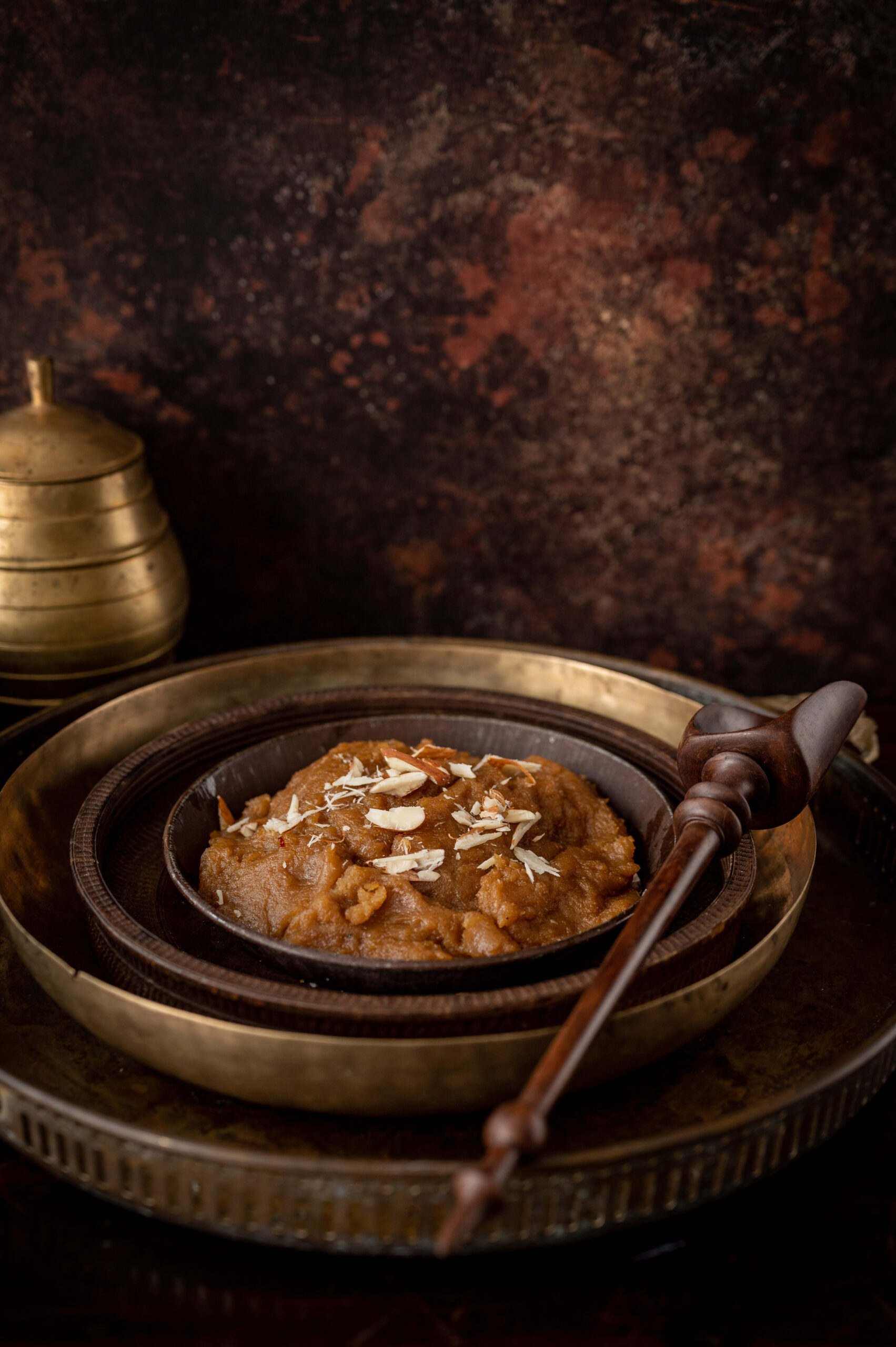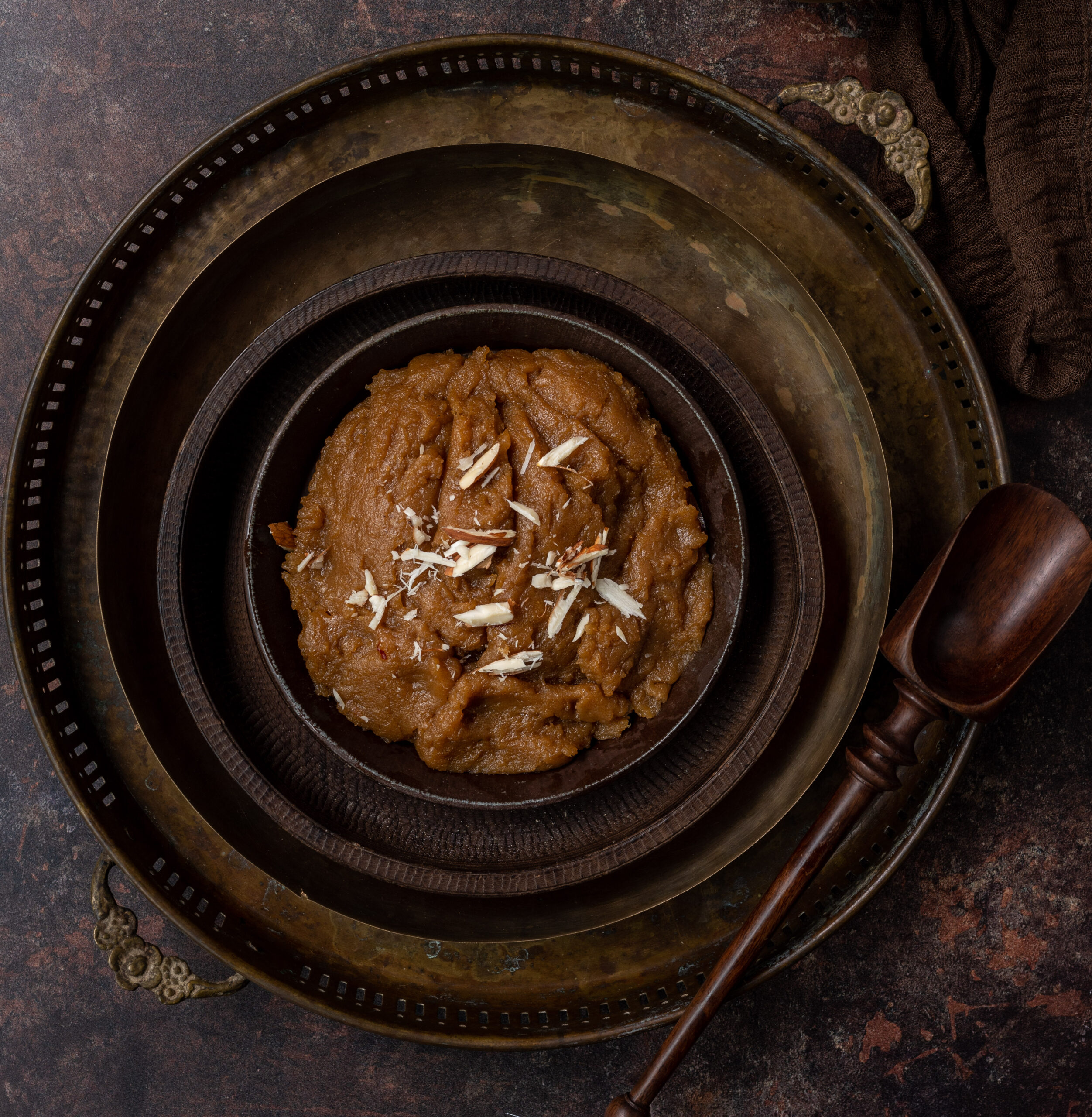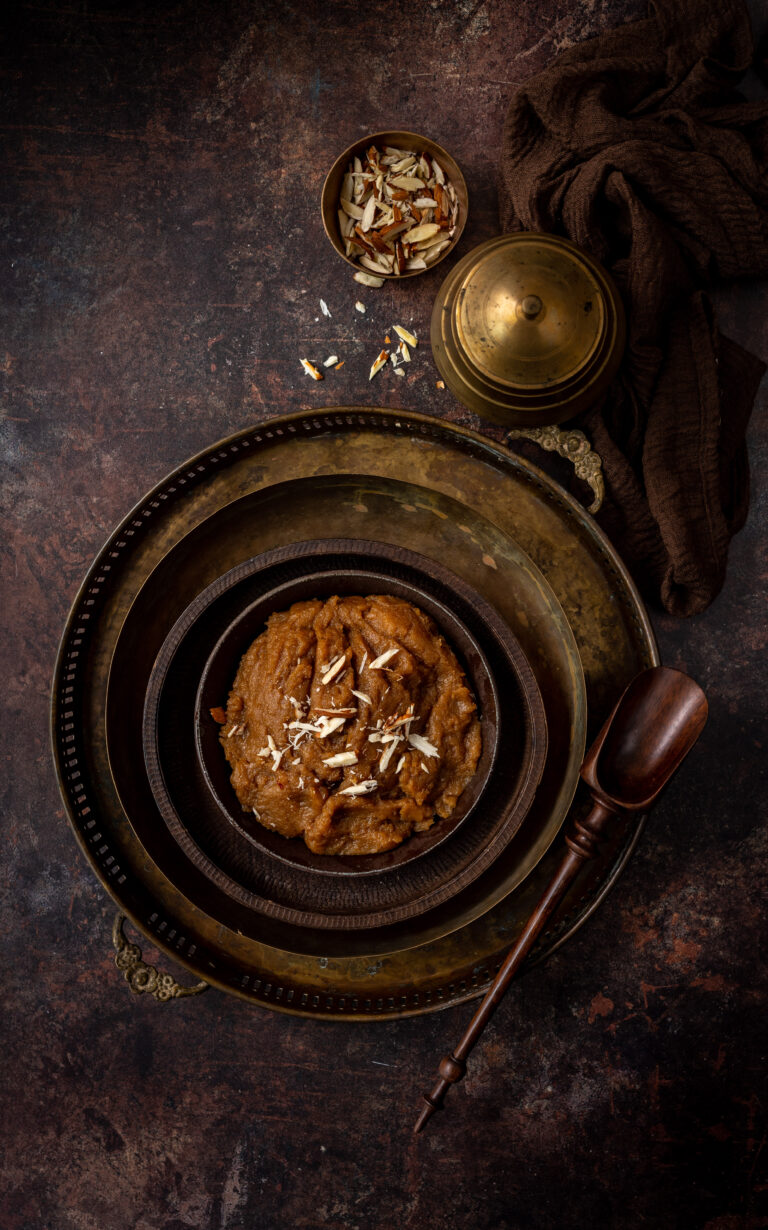
Every time that I had whole wheat halwa while I was growing up, it was mostly made in a jiffy. This was because whenever unexpected guests landed up at home and my mother had to make something sweet to serve them, this was her go-to recipe. Most people of that generation who cooked were extremely versatile. They knew what would work quickly, based on the ingredients they had on hand. It was also a time when those of my generation literally grew up in each others’ homes. So unexpected guests were always aplenty, and the Indian courtesy of feeding them was never forgotten, no matter how much of a surprise they may have been!
The base of this recipe is wheat, jaggery and ghee – items which would invariably be in any Indian kitchen. The additions like saffron and cardamom may not always be available, but the essential ingredient list is one that was quite reliably in every home while I was growing up, and most likely still is today. These are inexpensive ingredients. Not many could afford refined sugar back then, so the accessible and healthier jaggery was used, along with affordable staples like wheat and ghee.
Wheat-ghee-jaggery is an age-old combo, as can be seen in the auspicious sukhudi, which uses the same base. Sweets that utilise this combo are offered to the gods in many Indian homes, and it’s easy to see how the accessibility of the ingredients make them a logical choice for many.
The simplicity of such offerings is part of their beauty. In fact, aside from them being offered in worship, they were also the key feature of birthdays. Back when I was a kid, a birthday cake was not always guaranteed. What we would offer to the gods on that day, and then consume for ourselves, was the big question. “Birthday? Big deal. Get up and go to school!” was a refrain many of us heard! Still, our mothers would usually prepare our favourite Indian sweets that day. My brother liked rava kesari, so that’s what he would receive. As for me, it was this whole wheat halwa that was usually my birthday treat.
I loved birthday parties, and had been to a few of my friends’. There was one year when I decided to throw myself a surprise party – meaning, it was a surprise for my mum! I went back home after school with my whole class, with absolutely no advance notice, and announced that they had all come to celebrate with me. I knew that if I had asked her earlier, she would just have said No. But with all my friends already there, she obliged so very sweetly. Looking back, it could not possibly have been easy to muster up a party immediately. But the feast contained this whole wheat halwa, some standards like toasted sandwiches – and even some McRennett’s cake which she somehow managed to organise last minute. You may recall that I’ve never quite been a fan of what I call that smelly vanilla cake, but it is cherished by my generation. It was a hit at my party too, of course. But that whole wheat halwa was what shone in my mind, and still does, all these years later.

Whole Wheat Halwa
(Yield: 5)
¾ cup whole wheat flour
¼ cup jowar flour
½ cup ghee
½ cup jaggery
A pinch of saffron
1 tablespoon milk
A pinch of cardamom powder
1½ cups hot water
½ cup jaggery
Soak the saffron in the milk and set aside.
Heat a kadai and add the ghee. Once it has melted, add the flours. You will notice that I use jowar, or sorghum. This is my addition to the recipe, and another way for me to bring healthy millets into my desserts.
Stir on a medium flame. Stir continuously, else the flour will stick to the bottom. This will take approximately 12-15 minutes. Stir until the mixture turns a dark golden colour. You never want a dull-looking halwa! Even if you skip the saffron or cardamom, you absolutely cannot skip the continuous stirring when it comes to this dish. The secret to it rests entirely in doing that well.
Then, add the jaggery and keep stirring until the jaggery melts.
Lower the flame and add the hot water slowly, continuing to stir continuously. Be careful as the mixture will splutter. Stand away from the kadai at this point. Once the water mixes well with the flour, then bring it back back to a medium flame – while mixing non-stop.
The mixture will thicken and the ghee will separate. Add the cardamom powder and saffron. Mix well again. Serve.
When I think back about my mother stirring constantly over the stove while a gaggle of hungry schoolgirls waited, I am filled with love. That love continues to be passed on in this recipe. I hope you’ll enjoy it too, and please do check out the various Indian sweets I’ve shared earlier on this blog as well.




